CAMP BUEHRING, Kuwait — The U.S. Army is rolling out a new program for certified medical-personnel to borrow state-of-the-art medical-training equipment from the Training Aids Service Center on post, scheduled to be fully implemented by this summer.
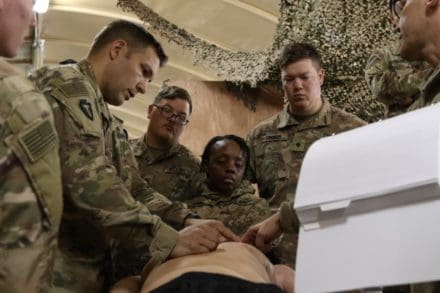
The medical-simulation unit is a mannequin that emulates many aspects of battlefield casualties to help commanders train their soldiers more effectively in Tactical Combat Casualty Care, in compliance with Department of Defense Initiative 1322.24: Medical Readiness Training (MRT).

“The purpose of this device is for the commanders to employ collective training where a casualty is incurred, and the squad is supposed to react,” said Dr. Jerry P. Higman, Deputy Product Manager of Medical Simulation, U.S. Army Program Executive Office for Simulation, Training, and Instrumentation. “At present we have instruction to field 77 systems across 41 sites.”
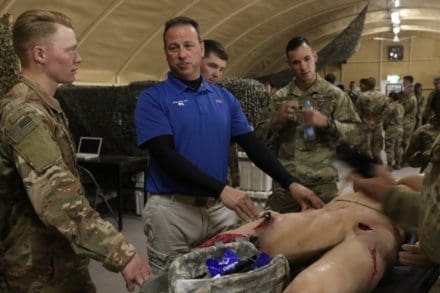
The mannequin, named the Tactical Combat Casualty Care Exportable, or TC3X, simulates the three main causes of death on the battlefield: airway obstruction, tension pneumothorax and blood hemorrhage, commonly referred to as the “ABC’s” — airway, breathing, and circulation. The TC3X is fully animatronic and effectively simulates the ABC’s through a heavily-monitored internal system, giving feedback to the soldiers through physical movements and vocalizations.
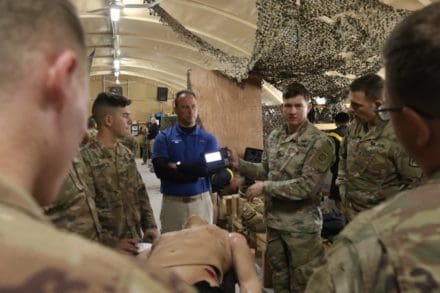
The movements and vocalizations can be set and controlled by an operator before the training takes place. The controller has a variety of scenarios built in with spaces for custom scenarios. Scenarios range from bullet wounds and shrapnel damage to head trauma and full amputations, requiring soldiers to act accordly in real time.
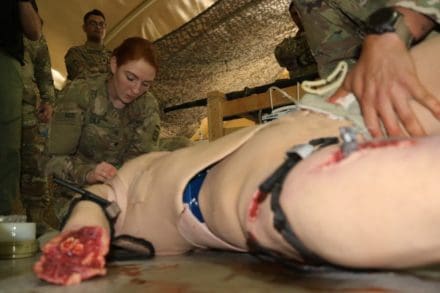
“You should definitely treat it like you would treat a human,” said Lt. Col. Rickardo Christopher, Product Manager of Medical Simulation, U.S. Army Program Executive Office for Simulation, Training, and Instrumentation. “If you don’t apply correct pressure to the wound, it’ll keep bleeding just like a real human being.”
The mannequin is built to withstand dust, dirt, mild moisture and variations in temperature, necessary for field-operations training.
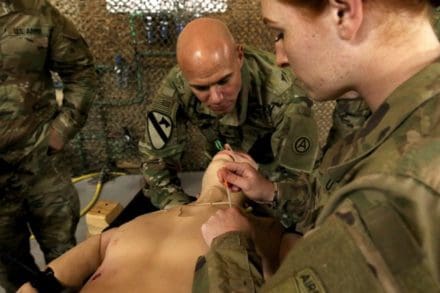
“You’re working with a high fidelity mannequin, but it is robust,” said Higman. “Do not be afraid to work with the mannequin, in terms of deploying it or taking it to the field. We do not want the medics to have any inhibitions on checking it out.”
“You have to use what you have to get better,” said Christopher. “This mannequin sets the condition for soldiers to increase their overall medical readiness.”
To check out a TC3X for use in training, see the TASC on post to see if and when they are available.
By PFC Andrew Zook

